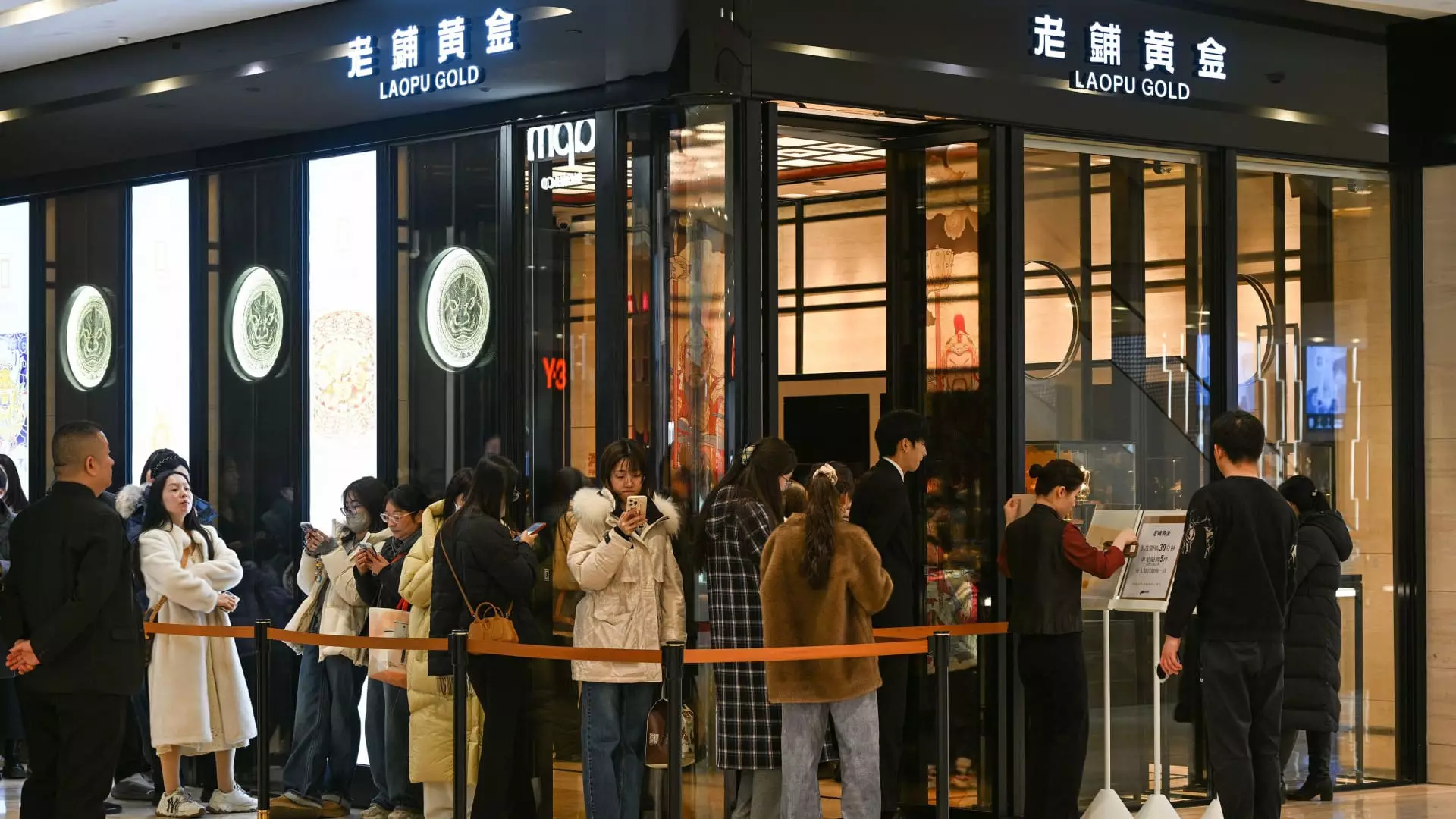China’s economic landscape has long fascinated economists and policymakers alike, yet recent earnings reports from local giants paint a disheartening picture of consumer behavior. Despite pockets of recovery, the overarching sentiment reveals a fragile optimism colored by the specter of the previous few years. This article delves into the complexities of the current economic environment, highlighting areas of growth while acknowledging the substantial barriers still in play.
Incremental Growth vs. Pre-Pandemic Glory
The claim that consumer spending is on a path of gradual recovery is a common narrative among business leaders and economic analysts. While companies such as Alibaba and JD.com reported an uptick in revenue growth, the numbers remain significantly below the pre-pandemic highs. For instance, JD.com noted a substantial 15.8% year-on-year growth in sales merely for electronics and home appliances—but this statistic loses its luster against the backdrop of a 23% surge experienced back in 2021. As Charlie Chen of China Renaissance aptly pointed out, a full revival of consumer confidence lies at the crux of sustained economic growth. The current revenue figures may display an upward trajectory, but they’re more akin to fleeting sparks rather than a roaring flame.
Looking deeper into the numbers, one might argue that the current growth rate underscores an inherent inconsistency in consumer psychology, shaped by the residual impacts of the pandemic and ongoing economic uncertainties. If consumer confidence remains low—particularly owing to the dampening effects of the real estate slump—this could lead to a challenging environment for sustained growth.
The Government’s Role: Incentives and Indulgences
Amidst these contrasting signals, it becomes increasingly evident that governmental policies are cast in a dual role; serving not only to mitigate the adverse effects of weak consumer sentiment but also to recalibrate consumer desires. Authorities have ramped up incentives—such as trade-in subsidies to boost purchases in various sectors. While these measures may stimulate short-term consumption, the question arises: are they merely a bandage for a more profound economic malaise?
It’s crucial to evaluate whether these policies genuinely address the systemic issues at play or if they merely push consumers toward increased spending in certain niches, leaving wider sectors of the economy to languish in stagnation. The notable growth of niche companies like Laopu Gold and Pop Mart suggests that targeted investments can yield dividends. However, this growth raises broader concerns about the effectiveness of one-size-fits-all economic strategies in fostering a balanced recovery.
The E-Commerce Titan’s Tightrope
While e-commerce platforms like Tencent exhibit modest gains, the contrast with explosive prior growth creates an acute sense of disappointment. The fintech and services sector expanding by merely 3% is troubling when juxtaposed against a formidable 39% increase in the same quarter of 2019—a period that now seems like a golden age. More than just numbers, these statistics reveal a deeper angst lurking behind the scenes. They suggest a pervasive fear that economic growth may be merely a series of recoveries rather than a comprehensive resurgence—a deeply unsettling prospect.
Additionally, the competitive nature of the Chinese market exacerbates these challenges. A shift in consumer preferences towards e-commerce is simultaneously hitting traditional retail chains hard. They struggle not only with heavy discounts flung by online retail giants but also with the insatiable demands for novelty and affordability from discerning consumers.
Market Complexity and Shifts in Consumer Behavior
The evolving landscape of consumer preferences further complicates the national narrative. While some segments flourish, like e-scooters experiencing whopping yearly surges, others falter. It’s noteworthy that despite the fervent push towards dynamic markets and sectors, numerous companies are left grappling with dwindling sales.
Particularly, the beverage market—from bubble tea chains to mainstream names like Starbucks—is witnessing stark declines in same-store sales. The focus on expansion, speed, and value can mask a more troubling narrative of consumer fatigue and price sensitivity. This growing hesitance to spend freely illustrates a widening gap between aspirations and reality.
Looking Forward: Unmistakable Clouds Ahead
In contemplating the future, the optimistic rhetoric from company executives tends to clash with ground realities. While short-term recovery may seem feasible, the long-term trajectory appears fraught with challenges. Policymakers may need to do more than offer incentives; they must address fundamental issues that hinder consumer spending, such as housing market instability and job security.
In an increasingly polarized world, where economic landscapes can shift dramatically, it is critical for Chinese policymakers to adopt a versatile approach. Pursuing a centered strategy that encourages varied consumer expenditures rather than imposing blanket policies could be vital in navigating the thickening fog.
Thus, while there are signs of recovery, one can’t shake the feeling that the road ahead is steep and dotted with uncertainties. With consumer confidence wavering and economic pressures mounting, the pillars of China’s recovery plan must encompass not just immediate fixes, but sustainable, transformative solutions to truly revive the spirit of consumerism that has long been a hallmark of this vibrant nation.

